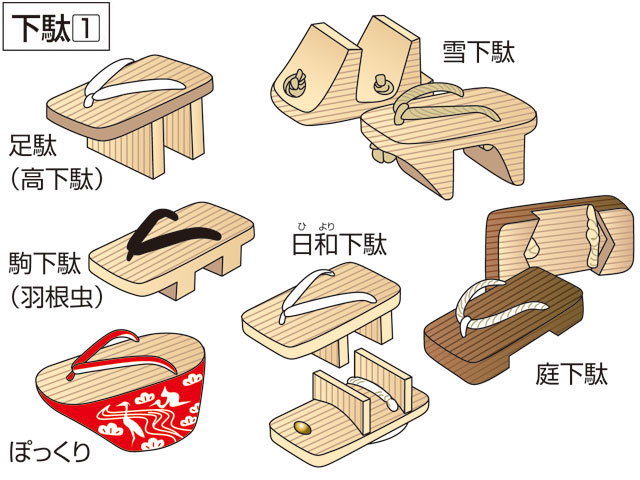 |
| Hitoe Sewing Terminology Diagram (Female hitoe shown. Descriptions below.) |
1. 袖口 sodeguchi sleeve hole
2. 袖幅 sodehaba sleeve width
3. 袖丈 sodetake sleeve length
4. 袖口下 sodeguchishita lower sleeve edge
5. 丸み marumi rounded edge
6. 袖下 sodeshita sleeve bottom
7. 振り furi "Swing", sleeve edge (Not on male kimono)
8. 肩幅 katahaba shoulder width
9. 袖つけ sodetsuke sleeve seam
10. おくみ下がり okumisagari buried okumi length
11. 剣先 kensaki "Point of the Sword"
12. 身八つ口 miyatsuguchi underarm hole
13. 抱き幅 idakihaba "hugged" width
14. 掛衿 kakeeri collar guard
15. 衿中心 erichuushin collar center
16. 上衿幅 uwaerihaba upper collar width
17.ゆき yuki center to edge length
18.肩山 katayama highest part of the shoulder
19. 袖山 sodeyama highest part of the sleeve
20. 前袖 maesode sleeve front
21. 衿山 eriyama top collar edge
22. 衿 eri collar
23. 前身頃 maemigoro front panel, (下前 shitamae the panel tucked under when tied)
24. 合いつま幅 aizumahaba width were collar meets okumi
25. 下前幅 shitaerihaba bottom collar width
26. 後ろ身頃 ushiromigoro back body panel
27. おくみ okumi extension panels
28. 衿先 erisaki collar origin
29.衿下 erishita length between collar and skirt hem
30. おくみ okumi (表面 hyoumen outside surface)
31. おくみつけ okumitsuke okumi seam
32. 前幅 maehaba front width
33. 裾 suso skirt hem
34. おくみ幅okumihaba okumi width
35. 後ろ幅 ushirohaba back width
36. 脇縫い wakinui under arm seam
37. 前身頃 maemigoro front panel (上前 uwamae the outward panel when tied)
38. 前幅 maehaba front width
39. おくみ幅 okumihaba okumi width
40. つま先 tsumasaki hem "toe"
 |
| Hitoe Sewing Terminology Diagram - Inside Out Back View (Female hitoe shown. Descriptions below.) |
2. 掛け衿 kakeeri collar guard
3.肩当て kataate shoulder guard
4. くりこしあげ kurikoshiage tuck created for the collar gap (Not on male hitoe)
5. 背縫い senui back seam
6. いしき当て ishikiate kimono seat guard
7. 後ろ身頃 ushiromigoro back body panel (裏面 rimen underside surface)
8. 前身頃 meamigoro front body panel
9. おくみ okumi
10. 裾 suso skirt hem
11. 後ろ幅 ushirohaba back width
12. 前幅 maehaba front width
13. おくみ幅 okumihaba okumi width
Images scanned from 新きもの作り方全書. Translated by me (I tried my best but I am no expert. They may be inaccurate.)



















